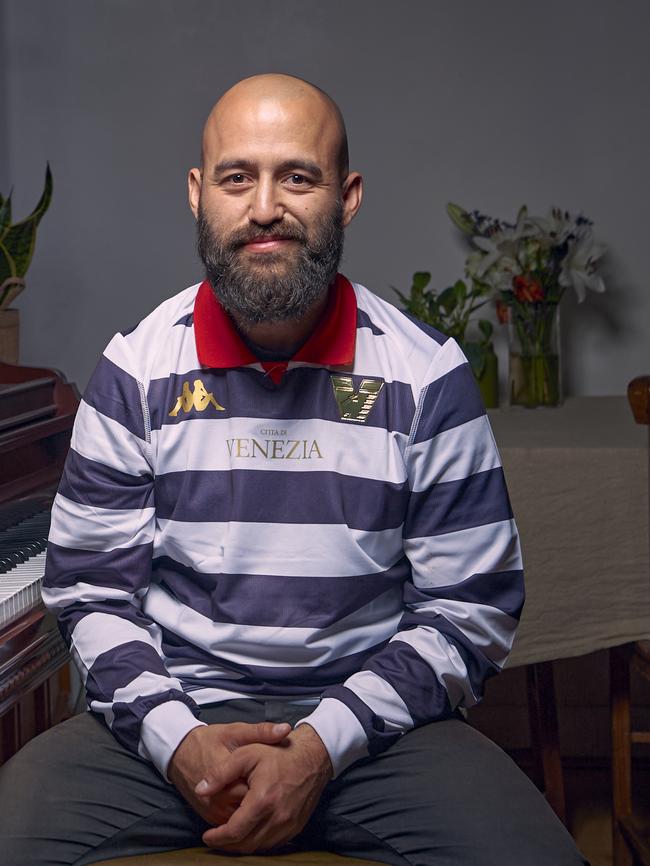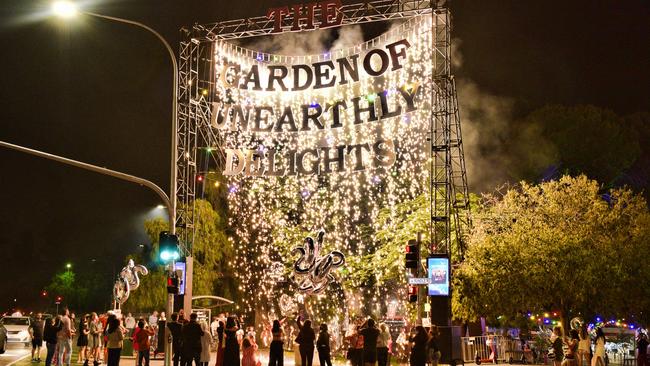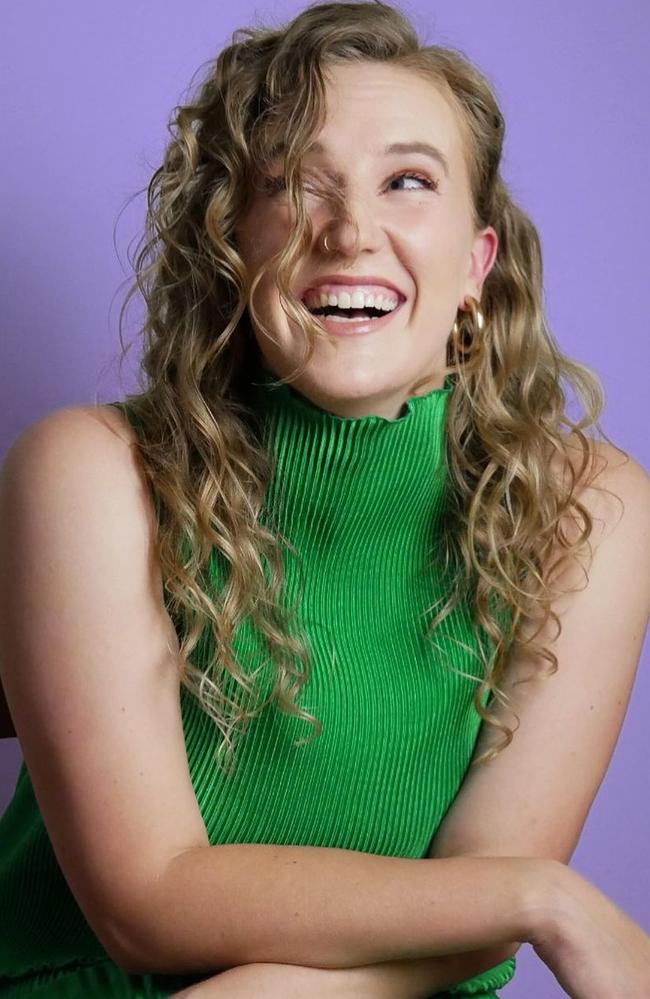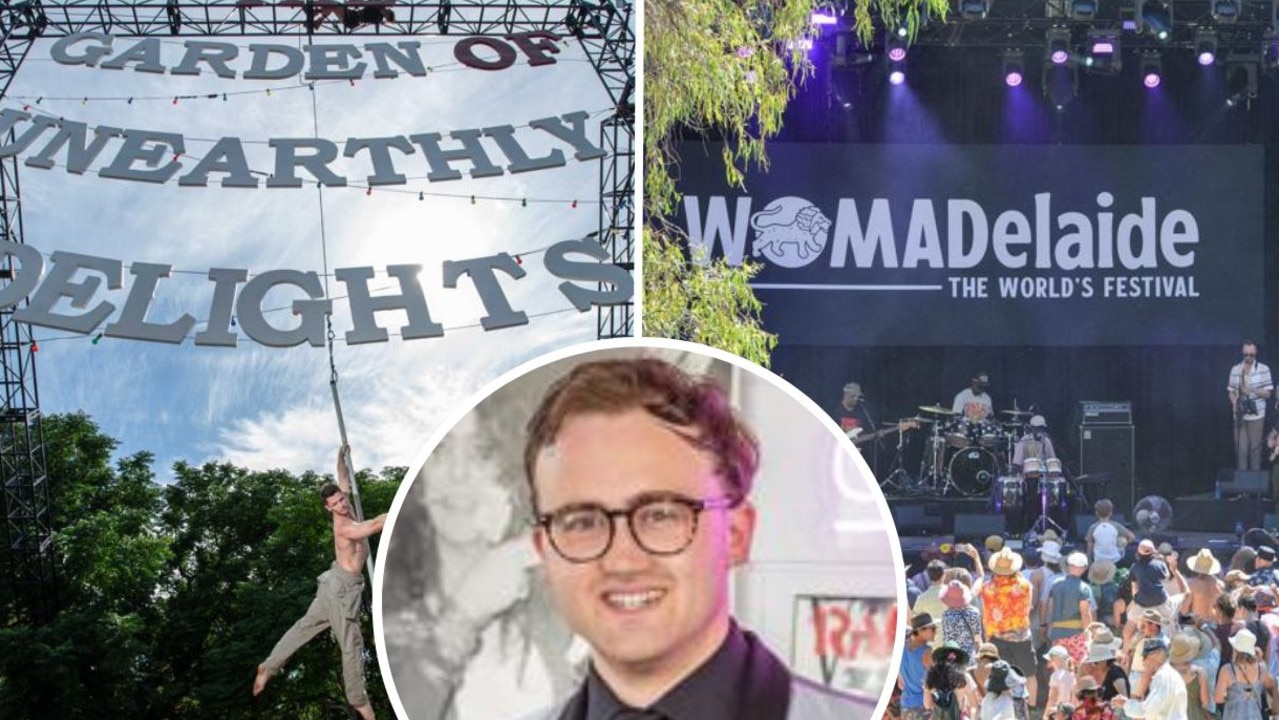Adelaide Fringe artists reveal how much they actually make through ticket sales
The Adelaide Fringe smashed records in 2023 — selling one million tickets for $25.1 million in box office revenue. But where does this money actually go?

Fringe
Don't miss out on the headlines from Fringe. Followed categories will be added to My News.
Fringe artists have revealed how much they take home from a stint at the Adelaide arts festival, with some claiming they’ve lost hundreds of dollars to participate.
In 2023, the Fringe sold one million tickets for a total of $25.1 million in box office revenue, $24 million of which went directly to artists and venues, according to an economic impact report.
But from the five per cent cut the Fringe takes from ticket sales, marketing costs and venue hire, to accommodation and living expenses, some artists return home empty-handed.
As such, many adopt the goal of simply breaking even.
Melbourne comedian and Fringe regular Blake Everett, who is performing at Rhino Room with his show Freak Behaviour, told The Advertiser “you’re losing money just by being there”.
“I did a show with Oliver Coleman that sold out its entire run, won a weekly award for best comedy and got a 5 star review in The Advertiser, and we still went home with no money.”
He said while it’s always worth it in the end for the atmosphere, during the show run, getting through each day is a challenge.
“Every single expense is in question,” he added.
“Can I justify a beer after the show? Should I Uber or should I get the bus, or should I walk an hour and a half?”

Fringe artists pay a $400 fee — which has thankfully not increased in recent years — to register their show before arrival, with some also fronting a venue hire flat fee if they’re performing outside the main festival hubs of Gluttony and the Garden of Unearthly delights.
“You pay your registration, venue hire, promotion, accommodation, etc. months before the festival begins,” Mr Everett explained.
“You hope it all works out, and then a few weeks after the festival finishes, you might get an email saying you made a few hundred dollars (not taking your daily expenses into account). “Other times you get an email from a venue saying ‘you owe us $473’ if you’ve paid a deposit and haven’t made enough from ticket sales to cover the total hire cost.
“You’re about to jump into your season at Melbourne Comedy Fest which immediately follows Fringe, so that money simply doesn’t exist.”
One of the biggest struggles for Mr Everett over the years has been finding affordable accommodation, until he found a Fringe “mum and dad” to put him up.
The Fringe also provides housing options via a free platform for locals to host an artist at a lower rate than other online listings.

For fellow Melbourne comedian Aidan Jones — who is skipping the festival this year to work on a new show — Fringe tours, while “always worth” the risk, have been financially hit and miss over his decade-plus in stand-up.
“The last two years I’ve sold more around 40-50 per cent (of my ticket allocation) and either broke even or lost money,” he told The Advertiser.
“Among comics, Adelaide Fringe has the reputation of being pretty brutal in terms of getting audiences,” Mr Jones explained, musing audiences are more likely to be enticed by circus and physical theatre over up-and-coming comedians.
“Everyone knows that going in, so you just go to work on the show and hopefully break even. Plus it’s good fun”.
He added that while he has made money “some years,” the experience is still “very valuable”.
“I still get to work on the show … Melbourne Comedy Festival is the main one where you hope to make money,” he said.
While The Advertiser understands base level ticket splits between artists and venues operate at roughly 60/40 per cent at the Garden of Unearthly Delights and 70/30 at Gluttony, in favour of the artist, deals between artists and venues are privately negotiated and unique to each show.
In some instances, an independent venue takes a risk on a show under a buying model, with the artist paying a flat hire fee and recouping a higher percentage of the ticket sales.
Executive director of the Adelaide Fringe Jo O’Callaghan explained there are “thousands of different ways” artists are getting paid from the festival.
“We do know from our data that annually, about 60 per cent of shows tells us they either made a profit or break-even on their seasons, noting that a break even includes paying the artist a salary.”

Ms O’Callaghan explained many performers, like Mr Jones, don’t see the Fringe as a money-making venture, rather an opportunity to develop concepts and access the festival’s “Honey Pot” scheme, which provides access to a network of international industry figures.
For others, it’s simply the sense of community and joy of sharing their art that prompts their annual application.
She said while there have been “myths” around artists not getting paid during the Fringe, many have indicated they’ve made half their annual income over a five-week run of shows.
“I think that’s definitely recognised in the number of returning artists and participants we have each year … normally 70 per cent of our program is people who have participated before, so that indicates we have a model that is favourable.
“Not just the venues, but the artists themselves, are often taking a risk to put on a show, and that kind of creative entrepreneurship is actually offering a return in wages.”
This is certainly true for local performer Millicent Sarre, who is bringing a three-person musical comedy show, Bisexual Intellectuals, to Gluttony this year.
“I’m in a relatively unique position as a South Australian artist, so we don’t have the overheads of travel and accommodation,” Ms Sarre clarified.
“For the last couple of years, I’ve definitely relied on Fringe as a considerable source of my annual income … But I have really noticed that things are starting to get more prohibitively expensive for independent artists,” she explained.
“From a venue perspective, I have worked with Gluttony for the past five or so years, and we’ve got a really great agreement and venue split with them percentage-wise.
“Given the cost of living, and inflation going up, all the services we require to market our show, whether that is print flyering, online marketing, all of these extra little marketing titbits that we invest in, have all gone up very, very considerably.”

She said she was “grateful” to have secured arts funding from the Fringe and City of Adelaide this year, but even with the extra cash injection, was feeling the pinch.
“I took the 2023 prices of what I spent on my advertising and added 10 per cent to everything for inflation. Even with that 10 per cent leeway, everything is even more expensive than what we budgeted for.
“I’ve seen ticket sales move quite slowly this year. I went to a media event (this week) the general consensus was that ticket sales are lower than we’d expect them to be this time of the year, and that everyone seems a little bit nervous.
“What I have noticed is that people seem to really be relying on promotional codes and discounts and special deals.
“The ticketing income has actually been considerably less (over the years), because people are relying on these discounted tickets.
“I absolutely want our work to be accessible … At the end of the day, i’s such a fine balance between making our work accessible and being also able to make a living out of our work.”




